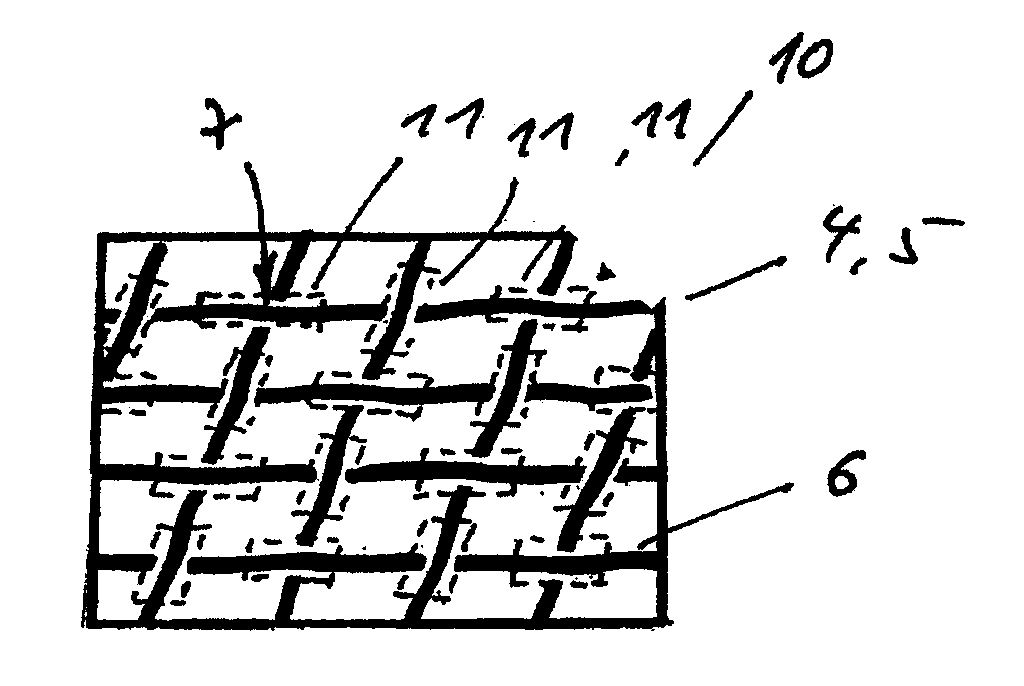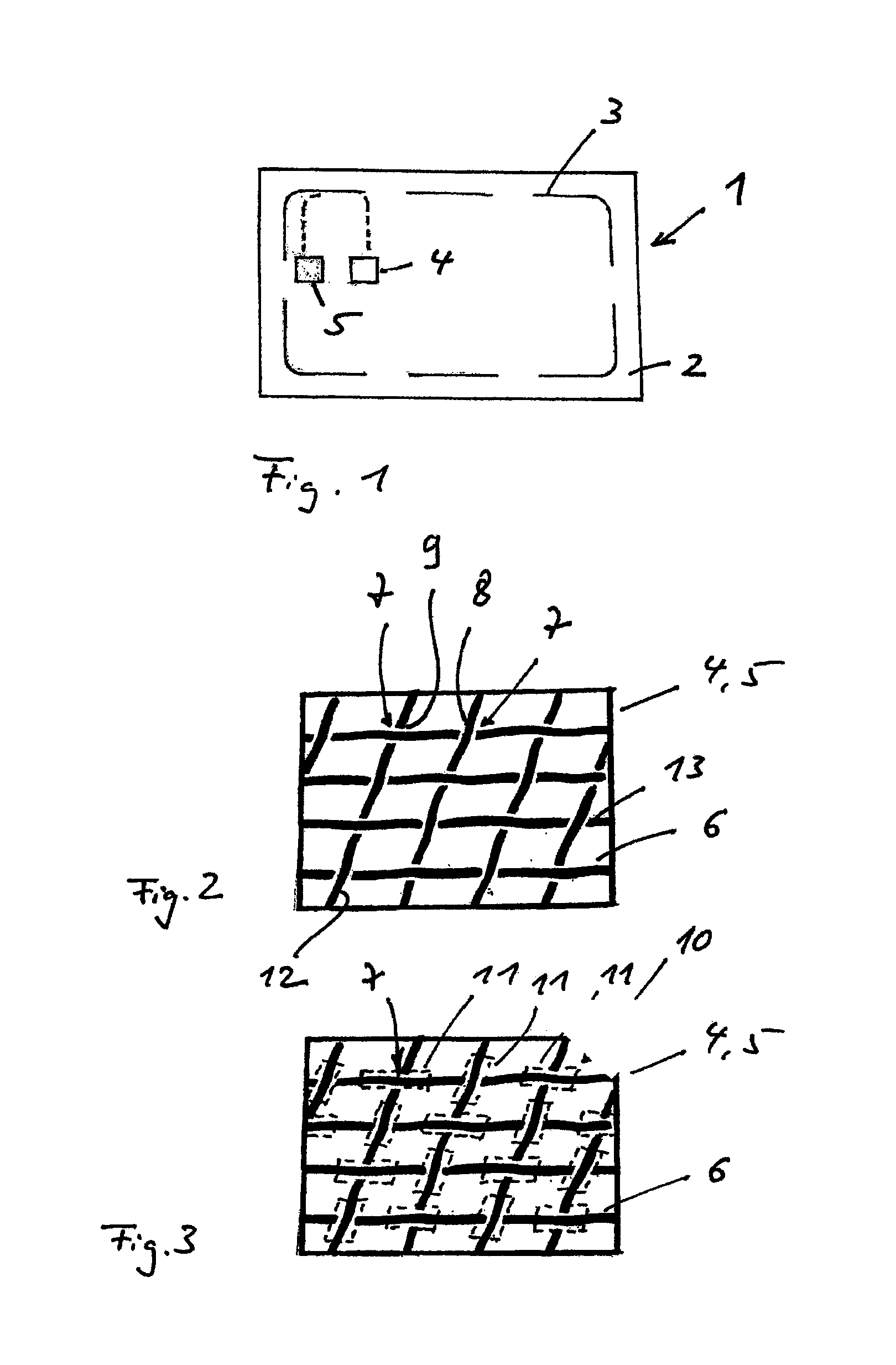Chip card inlay for contact-activated and contactlessly activated chip cards
a technology of contact activation and chip card, which is applied in the field of contact activation and contactless activation chip card inlay, can solve the problems of textile fabric ups, downs, uneven surface of textile fabric, etc., and achieve the effect of improving the chip connection
- Summary
- Abstract
- Description
- Claims
- Application Information
AI Technical Summary
Benefits of technology
Problems solved by technology
Method used
Image
Examples
Embodiment Construction
[0017]FIG. 1 shows a chip card inlay 1 for contact-activated and contactlessly activated chip cards, having a planar substrate layer 2 made of a non-conductive plastics material. Fastened to the substrate layer 2 is an antenna 3 having, at its end, planar conductive pads 4, 5 for attaching a chip (not illustrated). The antenna 3 is, in a known manner, preferably a planar coil.
[0018]As FIG. 2 shows, the conductive pads 4, 5 are formed from a textile fabric 6 having thread crossings 7, the weave points of which may be in the form of a raised thread 8 or lowered thread 9. As FIG. 3 shows, an electrically conductive contact zone 10 is provided on the respective face of the textile fabric 6, said electrically conductive contact zone 10 having a three-dimensionally conductive terminal pad structure with the weave points of the textile fabric as topographical contact zone elevations 11, for attaching a chip.
[0019]In order to form the conductive contact zone 10, the textile fabric 6 of the ...
PUM
 Login to View More
Login to View More Abstract
Description
Claims
Application Information
 Login to View More
Login to View More - R&D
- Intellectual Property
- Life Sciences
- Materials
- Tech Scout
- Unparalleled Data Quality
- Higher Quality Content
- 60% Fewer Hallucinations
Browse by: Latest US Patents, China's latest patents, Technical Efficacy Thesaurus, Application Domain, Technology Topic, Popular Technical Reports.
© 2025 PatSnap. All rights reserved.Legal|Privacy policy|Modern Slavery Act Transparency Statement|Sitemap|About US| Contact US: help@patsnap.com


